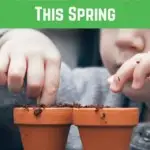
When the kids are home, you definitely don’t want them staying indoors all day. Getting them out into the garden can be a great way to make sure they get some fresh air, exercise and stimulation.
It’s never to early to instil in them a love of the great outdoors, and never too soon to get them growing.
No matter how large or small your garden may be, it can offer plenty of opportunities for fun, play, learning and adventure.
You can even learn a few things yourself as you discover new activities to enjoy together in your garden. And taking on some garden jobs with your kids this spring can also help you grow at least some of your own food.
Growing your own is a great thing to do in any setting.
The more you can grow at home, the less reliant you will be on outside systems, and the more self-reliant and resilient you can be as a family.
Garden jobs definitely don’t have to be a chore. The family that grows together can strengthen their bonds, and get a great sense of satisfaction at their achievements.
Gardening is not only good for everyone – it can also be a whole lot of fun.
Tips For Getting Kids into the Garden
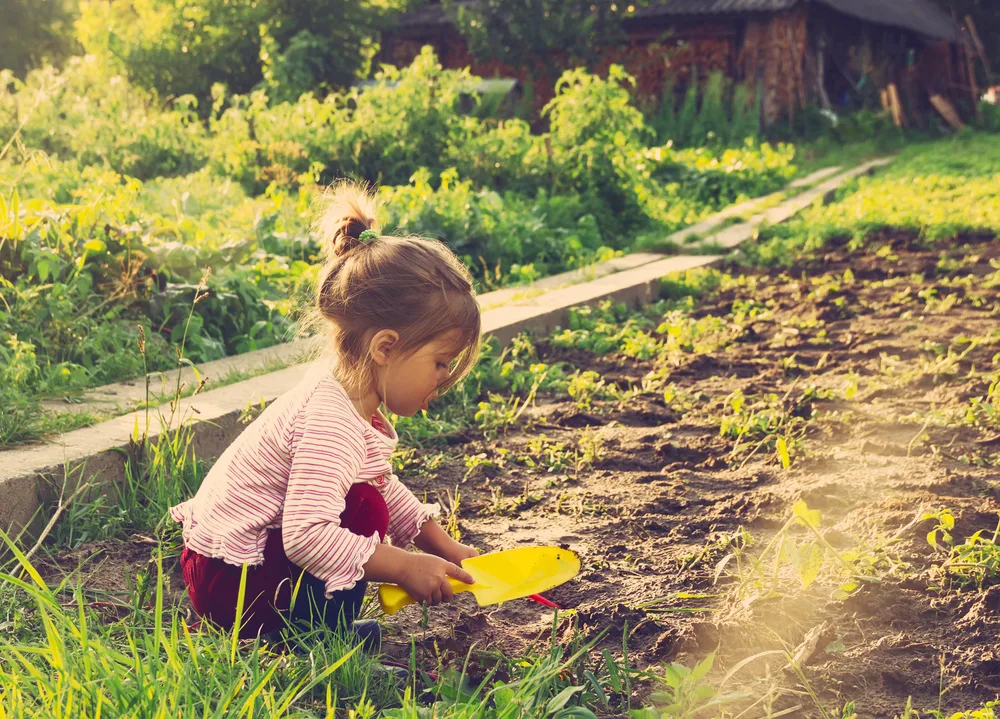
Before we begin, it is important to remember that kids are not all the same.
Some kids will love to get outdoors, while it may be a struggle to wrench some away from their screens.
Obviously, different age-groups will have different needs and desires. But from pre-school age children, to younger teens, there are ways to engage everyone in your family in garden activities.
To make sure gardening is something that your kids seek out, and never a chore, you should:
- Think about your own kids – their ages and inclinations. What do they enjoy? Are they particularly active? Are they bookworms? Which activities do they love, and what are their main interests?
- How do they learn best. For example, do they learn best by doing, through words or visual stimuli? How can you best capture their interest and engage their imagination?
- Make sure at least some of the things you do have quick results. Gardening is often about patience, and thinking long-term. But patience is something we have to learn over time. Make sure kids do some things that allow them to see the results of their efforts sooner rather than later.
- Start slow, with small projects that don’t take too much time.
- And keep things fun. Remember, learning does not need to seem like school.
- Give kids choices when it comes to activities and jobs. Don’t demand, but rather try to gently steer children towards the garden jobs you would like them to help with and enjoy.
- Inject agency and independence into your activities. Give your kids control over certain things, and they are far more likely to take an interest. For example, give them a section of your garden to call their own, so they can make seed or plant choices.
- Give them space. There are plenty of garden jobs you can do together as a family. But it is also important to give kids space to explore their own ideas and surroundings. Don’t schedule every second. Make sure kids also have some free time in your garden to do their own thing.
Sowing and Planting Jobs To Enjoy With Kids
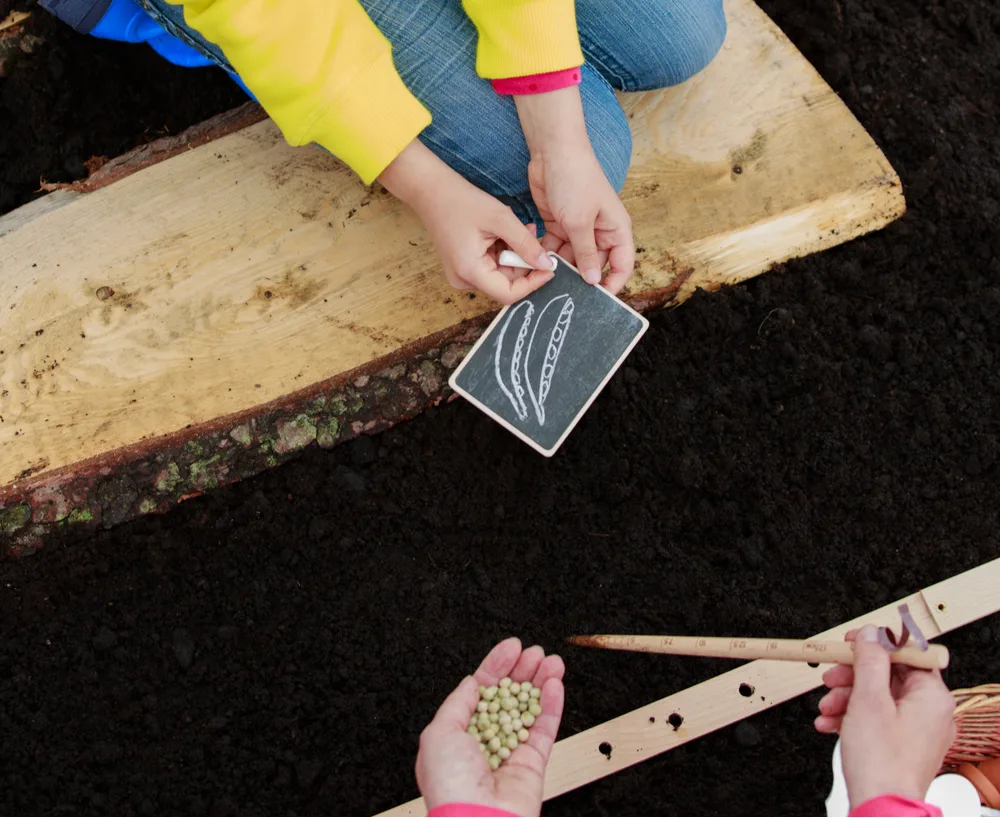
It has never been more important to get growing. Sowing seeds and planting with your children could be one of the first steps on your journey to greater self-reliance and resilience.
Here are some of the things you could do right now with kids:
1. Use Zero Cost Ways To Start Seeds
Use toilet roll tubes, citrus peels, eggshells and other biodegradable household items to make your own pots for starting seeds.
Get more details here.
2. Make Good Use of ‘Waste’ Items
Prick holes in the bottoms of yogurt pots etc. to use as plant pots, and sow seeds in them.
3. Make Egg-Heads With Cress Hair
Sow cress (or other sprouted seeds for micro-greens) in eggshells. Draw faces on the eggshells and wait for the ‘hair’ to grow.
4. Make Decorative Markers and Labels for Seeds You Sow
Sow common annual fruit and vegetable seeds for a container garden or to transplant later into an outside growing area.
Get kids to make plant labels or garden markers using rocks, wood or reclaimed materials with pictures of the things you’ve planted so you know which ones will pop up.
5. ‘Race’ Your Sunflowers
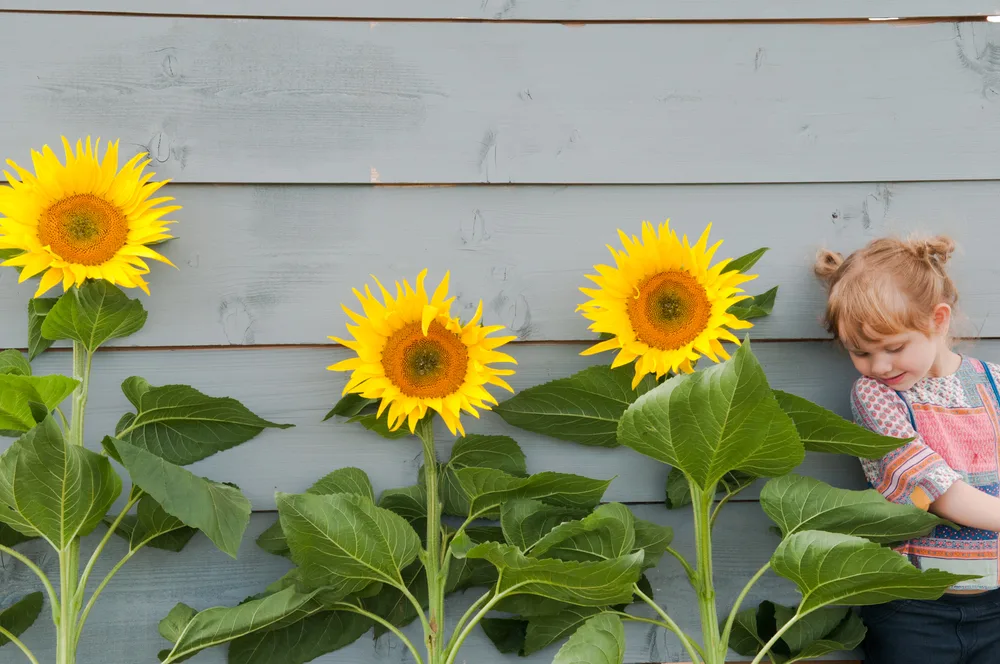
Source sunflower seeds for each member of your family and have a ‘race’ to see whose grows fastest and tallest.
6. Bee Kind
Sow some bee-friendly flowers for your garden. Teach kids about pollinators and why we want to help them. Think about other ways to encourage them into your garden and keep them safe.
7. Plant Potatoes
Plant some potatoes in planters, or in the ground in your garden. At the same time, you could potentially use one or two potatoes to make potato stamps for art and craft projects.
8. Prepare For Peas and Plant Some
Get kids to collect branching twigs that can be used as supports for peas, and plant some peas in your garden.
Talk about how the peas ‘hook’ onto the supports as they grow, and about how you’ll be able to eat peas straight from the garden later in the year. (The larger pea seeds are easier for young fingers to handle than many other seeds.)
9. Plant Strawberries for a Sweet Summer Treat
Plant some strawberries for a sweet harvest in the summer months. (These sweet fruits are sure to be a favourite in season to come.)
10. Plant Trees
As soon as possible, plant a fruit tree. Encourage your kids to think of the tree as their own, and to measure it as it grows.
Will it grow faster than they do? Encourage younger kids to think about how the tree needs food and water to grow, just like they do.
Garden Build Projects To Enjoy With Kids
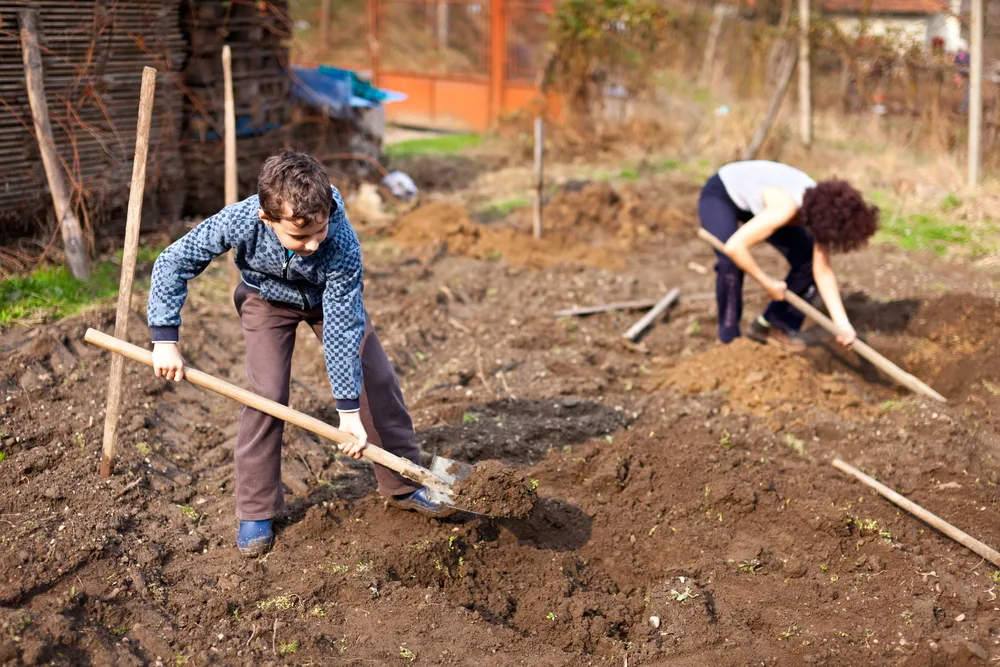
As well as sowing and planting, you should also think about projects you can take on to enhance your garden and keep it (and your family) healthy and productive over time.
Here are some garden build projects which you might like to enjoy together.
11. Compost Together
Make a new compost heap or bin using reclaimed materials. For example, you could use wood pallets to make a compost area, or use an old 55 gallon barrel.
If you are new to growing your own, creating a composting system should be the number one job on your list.
Show kids how composting works. (Some kids may be particularly interested in vermicomposting, with the wriggling worms.)
12. Collect and Store Water
Set up a system to collect and use rainwater that falls on your property.
13. Make a New Growing Area
Create a new growing area. You could the lasagna method, hugelkultur, or straw bale gardening techniques.
If you want raised beds, consider the natural or reclaimed edging materials you could consider.
(Remember, kids may really love having their own patches of land. So consider giving each child their own little garden to call their own.)
14. Make a Herb Spiral
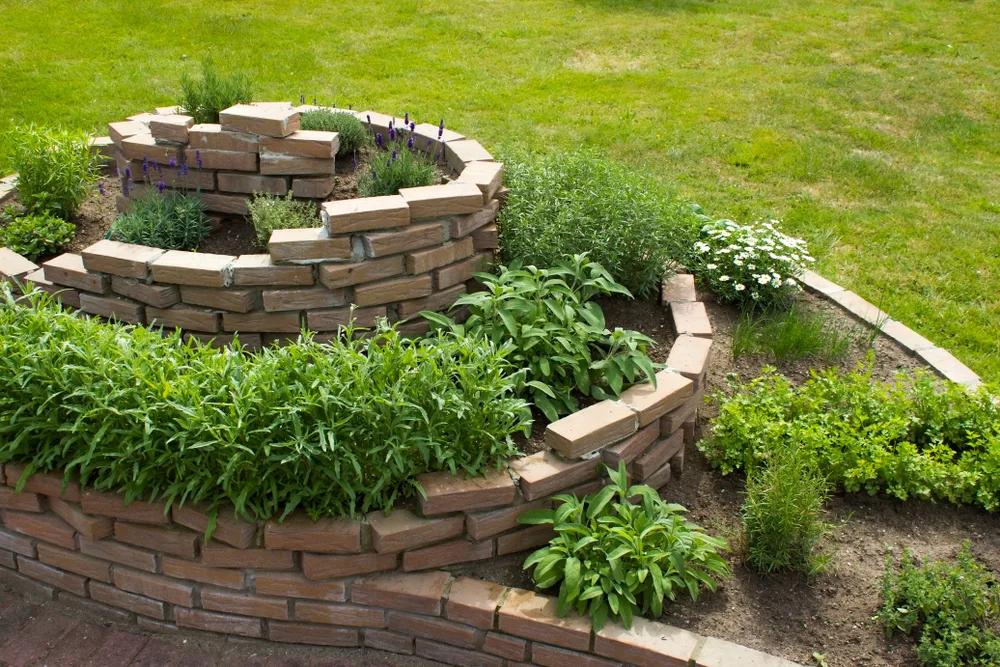
Make a herb spiral so you can have herbs for culinary, medicinal and other uses throughout the year.
15. Create a New Garden Border
Work together to make a new low-cost fence or hedge for your garden.
16. Dig a New Wildlife Pond
Make a wildlife pond for your garden. (Take care to ensure safety, especially for very young children. But having a pond can be an opportunity to teach them about being safe around water.
It can also teach them a lot about attracting wildlife, and the wildlife to be found in your area.)
17. Or Make Other Homes for Wild Creatures
Make some other wildlife homes and habitats. For example, make a brush pile, a bug hotel, a bee hotel, a butterfly house, bird nesting boxes, bat boxes etc..
18. Establish a New Garden Hide-Out
Make a den or garden hide-out. There are many different materials and resources you could make use of.
Often, you will need only items you already have around your home and garden. For example, you could:
– Make a den from garden branches.
– Or even living plants. (E.g willow, fruit trees, fruit canes. Or beans or other climbing plants on garden canes.)
– You could use old clothes or other old textiles to make a tipi or play tent for your garden.
– Use old bricks or other upcycled building materials to make your den.
– Or make a hoop house or other structure from reclaimed materials for playing in as well as growing in when the weather is not quite as good.
19. Create New Play Equipment
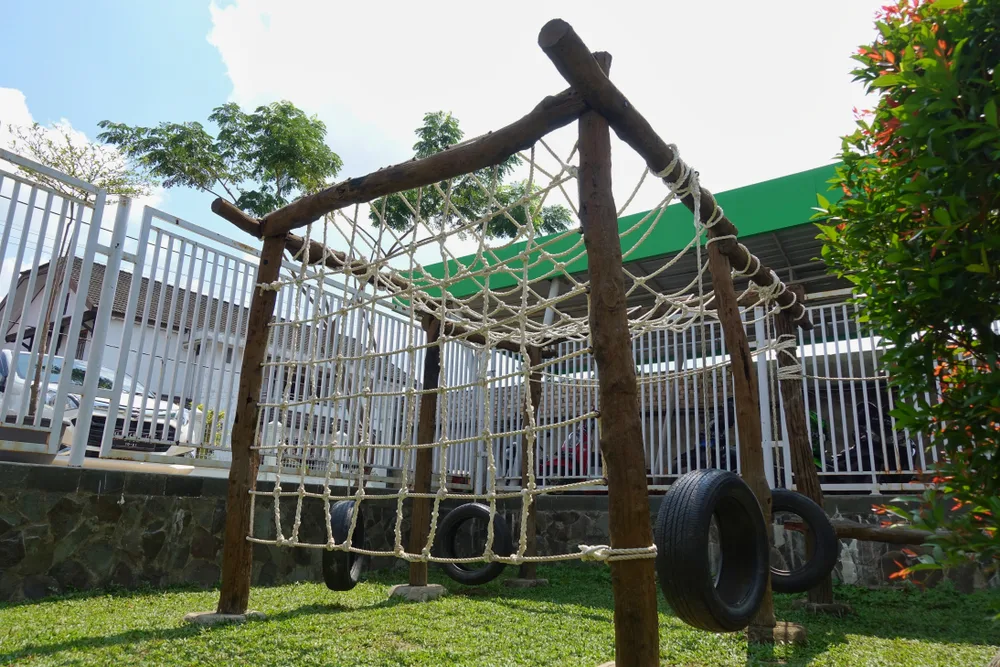
Make a new jungle gym or play set with your kids using a range of reclaimed materials.
Old tires, for example, along with reclaimed wood, are one thing that might be useful for this purpose.
How To make a Playground Out of Recycled Tires @ motherearthnews.com.
20. Or a Simple Rope Swing
Make a simple rope swing to hang from a tree or a structure in your garden.
How To Make a Rope Swing @ wikihow.com.
21. Or a Hammock To Chill Out In
Sew a DIY hammock using old fabrics for some chill-out time in your garden.
5 Ways to Make Your Own Hammock @ bobvila.com.
22. Make New Seating For Your Garden
Or make some new garden seating (using reclaimed or natural materials).
20 DIY Garden Bench Ideas @ blog.gardenloversclub.com.
23. Delve For Clay Which Has a Range of Uses
Get kids who like getting their hands dirty to help you dig some clay from your garden.
There are a wide range of uses for natural clay – from lining a pond, to making a new outdoors pizza oven…
24. Have Some Campfire Fun
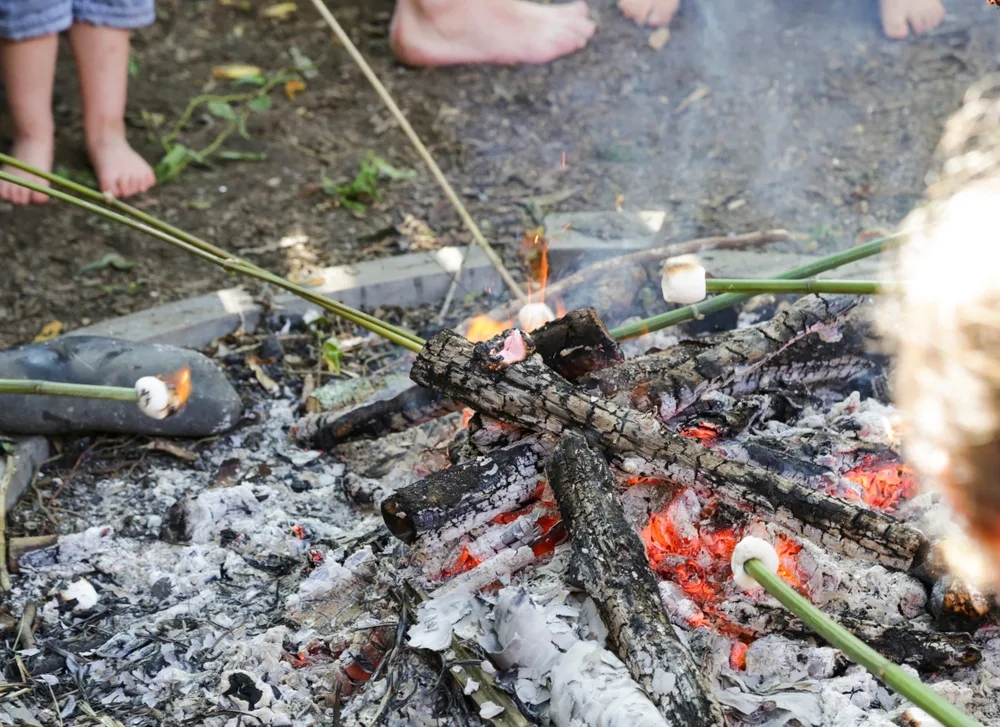
Make a fire pit for campfire fun – and roast some marshmallows or cook other food outdoors.
Having a fire pit in your garden can give you a wealth of opportunities to teach kids about fire safety.
25. Make a Mud Kitchen
Use reclaimed materials to make or improve your outdoors kitchen, and consider making a ‘play kitchen’ area where kids can make ‘potions’ and mud pies.
How to Make a Mud Kitchen @ diygarden.co.uk.
Surveys and Bioblitz Activities
Not all interesting garden activities involve actually getting your hands dirty. Observation is very important in an organic garden.
And you and your family can get a lot of enjoyment and learn a lot simply by watching and exploring what is already there. You and your kids could:
26. Learn To Identity Garden Plants
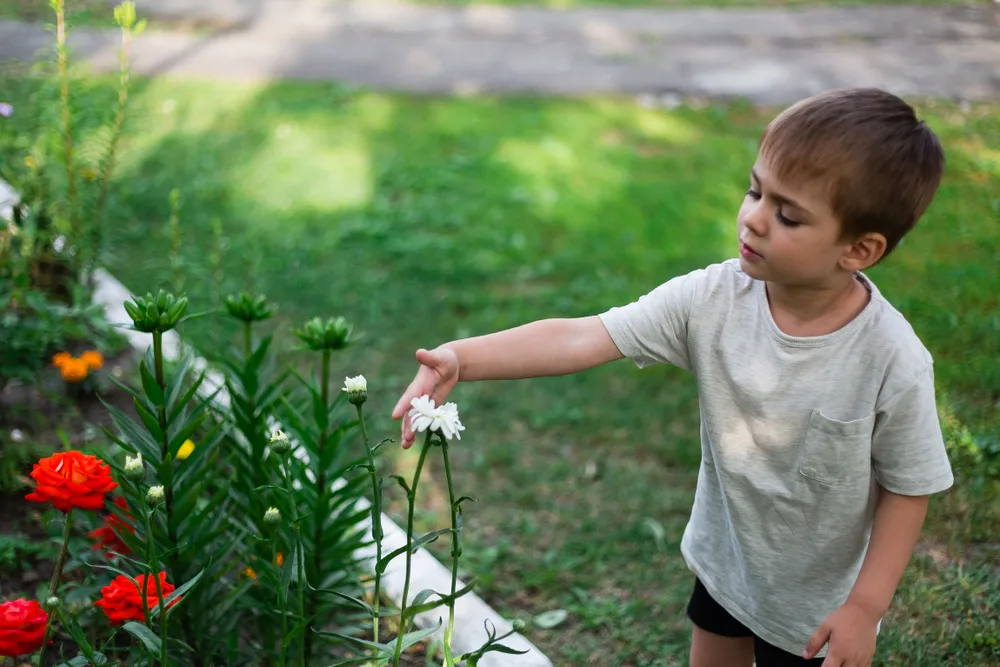
Download garden apps or get some good books, and make a list of the different plants in your garden. You can learn their names and more about them.
Discovering what is already growing in your garden can help you choose the right plants and understand your garden better in future.
(For example, the weeds growing in your garden can tell you a lot about your garden soil.)
27. Go on a Garden Safari
Take a ‘garden safari’ to see what wildlife is living and visiting your property. (Again, there are a number of books or apps which can help you with identification.)
28. Play ‘I Spy’ in the Garden
Play ‘I spy’ with your kids, to boost their ability to identify plant and animal life.
29. Find Out About Our Feathered Friends
Set up some bird feeders and take note of how many and which types of birds are visiting your garden.
30. Delve Deep To See What’s Below the Soil
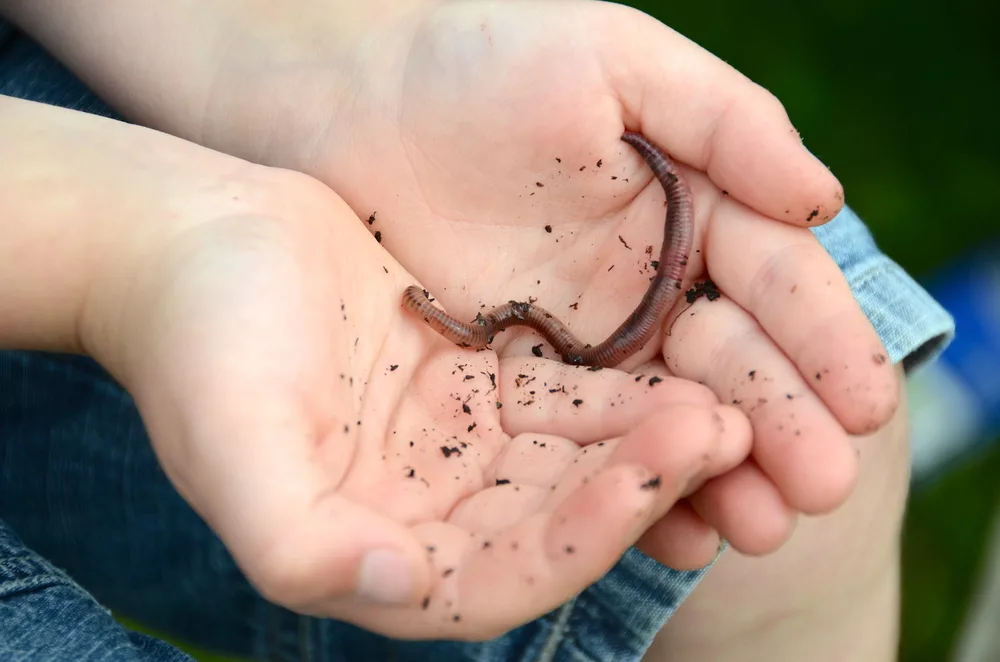
Dig a hole in your garden and see how many earthworms are there.
31. Become Amateur Entomologists
Use a pooter to collect and study bugs in your garden.
32. Or Study Lepidoptera in the Dark
Head out with a torch in the evening or early morning to study moths.
33. See What’s Walking Through Your Garden
Set up a footprint trap to see which nocturnal mammals are visiting your garden.
34. Perhaps Even Seeing Nocturnal Visitors For Yourself
Or even a wildlife camera, so you can see night-time visitors for yourself.
35. Explore Aquatic Life in Your Garden Pond
If you already have a garden pond, take a net and explore the life living in it.
Other STEM Projects To Enjoy in Your Garden
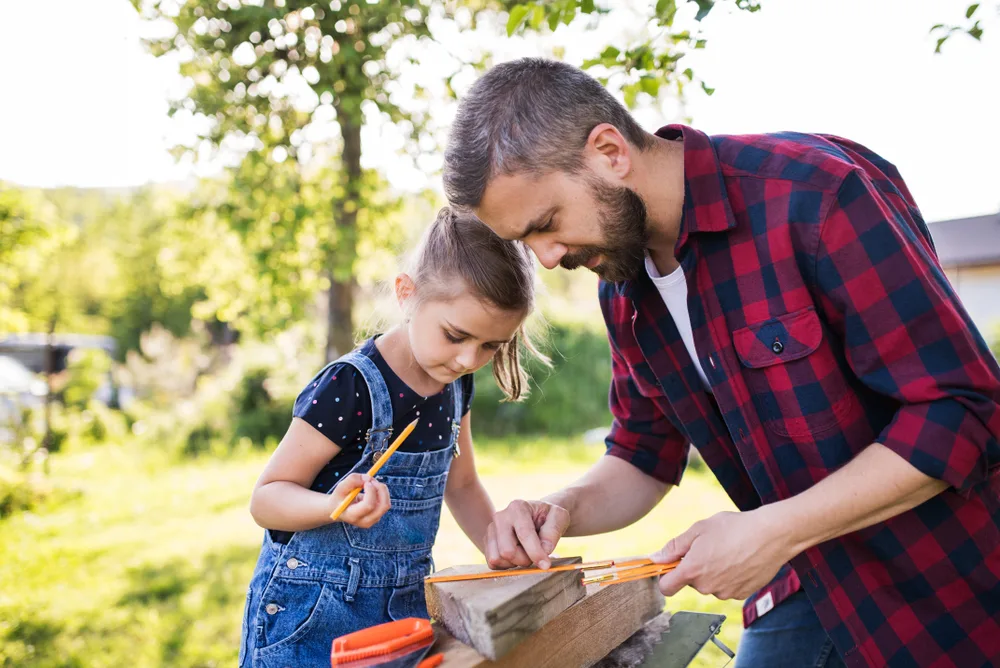
Studying and observation of your garden is a great way to integrate some science into home learning. It can also bring in elements of technology, engineering and math.
Even when you are not undertaking a formal curriculum, there are plenty of ways to make sure your kids keep learning and growing.
Here are some other science, technology, engineering and math (STEM) projects to enjoy with kids in your garden:
36. Count Anything and Everything
Count out seeds and work out how many you need to sow for your family.
37. Do Some Spacing Math
Work out plant spacings, and determine how many of each plant you might be able to grow in a given area.
38. Design and Make
Work with your kids to design new trellises, plant supports or vertical gardens for your space.
39. Become Amateur Meteorologists
Measure rainfall and monitor the weather with a DIY weather station.
40. Learn More About the Soil Where You Live
Study the soil in your garden, working out soil type, soil pH etc..
41. Look More Closely At the Natural World
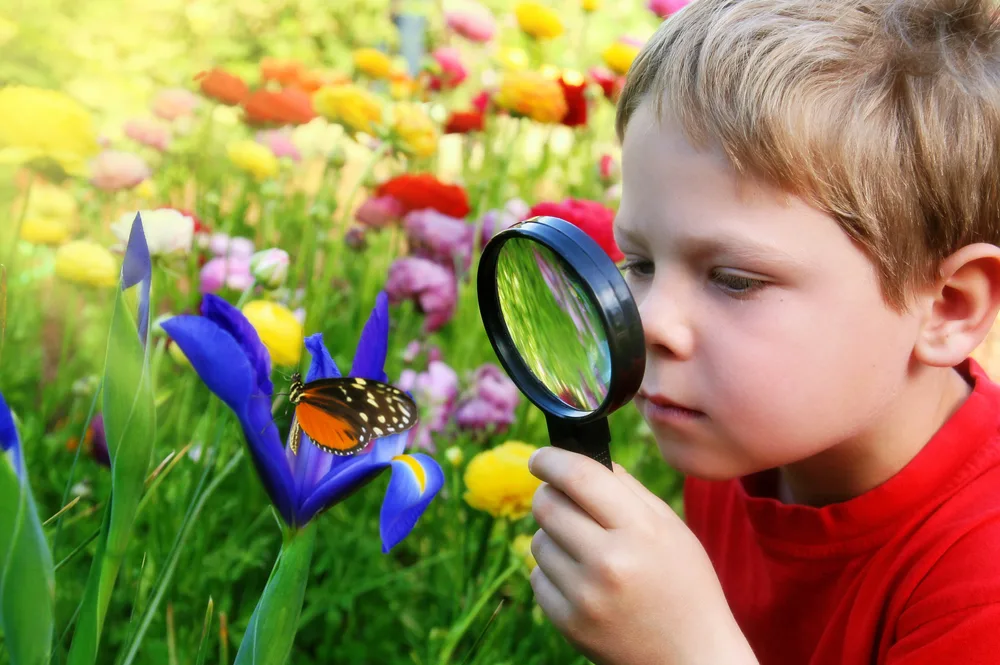
Take an up-close look at flowers, leaves and other plant parts.
42. Measure, Experiment and Learn
Measure plants as they grow, and conduct experiments to see what affects plant growth.
(For example, measure the effects of mulching and no dig vs traditional gardening. See what happens when you feed plants with a homemade liquid feed. Or, as the season progresses, see what effects arise from companion planting combinations.)
43. Innovate and Invent
Make, use and perhaps even improve upon garden tools.
44. Measure Yield at Harvest Time
As you begin to reap what you sow, measure yield. Weigh your produce and work out how you might be able to improve upon it.
(Encourage kids to think about the environmental factors that influenced plant growth, etc..)
45. Consider Water and How it Moves
Think about how much water you use in your garden. How could you manage water, conserve it, and keep it around on your property?
Involve kids in setting up systems that effectively catch and store water, and use it wisely.
Creative Family Garden Projects
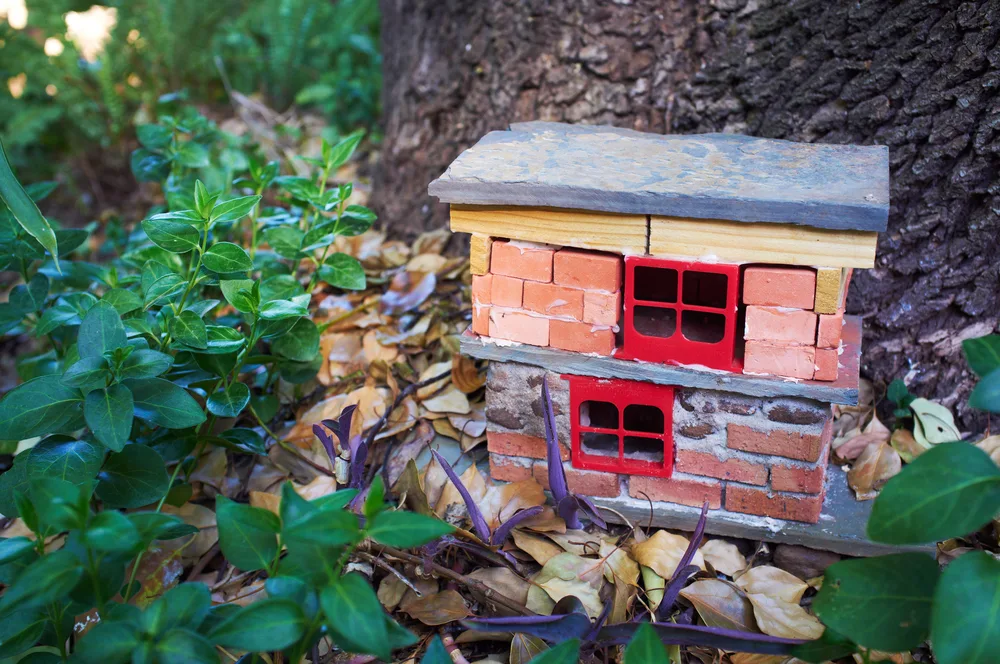
There are also plenty of ways for you and your kids to get creative through garden jobs on your property. For example, you could:
46. Make Artistic Walkways and Patios
Design and create attractive new garden paths or patio areas (with artistic mosaics or other designs with natural or reclaimed materials, for example).
47. Create a Range of Outdoors Art With Natural Items
Make natural artworks outdoors with stones, sticks, twigs, leaves, flowers etc… For example, how about making a fairy home and fairy garden.
48. Or With Items You’d Usually Recycle or Throw Away
Make outdoors artworks for your garden with household trash.
49. Build a Scarecrow
Create a quirky scarecrow to keep birds away from your seeds and plants.
50. Make Your Own Paper
Make paper from recycled paper, or even plant fibres if you are feeling very ambitious.
How to Make Paper at Home @ wikihow.com.
How to Make Plants into Paper @ firsttunnels.co.uk.
51. Weave Willow or Other Wood into Baskets
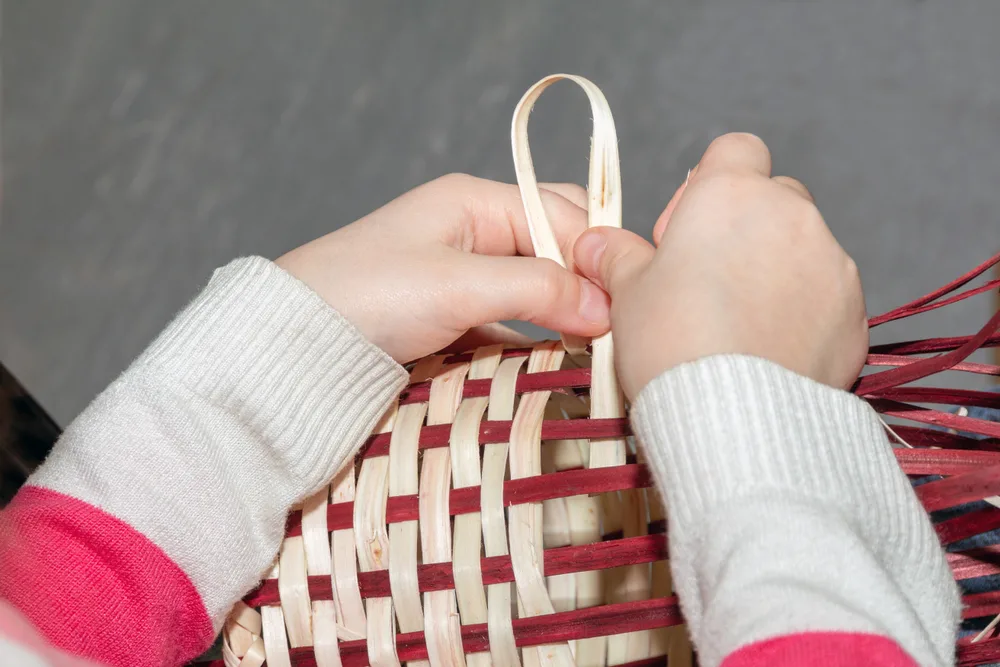
Weave baskets or other items from willow or other bendy sticks, bark or grasses.
How To Weave a Willow Basket @ wikihow.com.
52. Make Your Own Jewellery
Collect seeds and other items to use as beads and make some necklaces or bracelets.
How To Make Organic Seed Necklaces @ beadinggem.com.
53. Make Your Own Paint
Make your own paints from eggs and natural plant dyes/ vegetable scraps and paint outdoors.
Making Your Own Egg Tempera Paint @ tinkerlab.com.
54. Draw in Your Garden
Create charcoal artworks outdoors with your kids. (Perhaps even using charcoal you have made yourself.)
55. Press Flowers
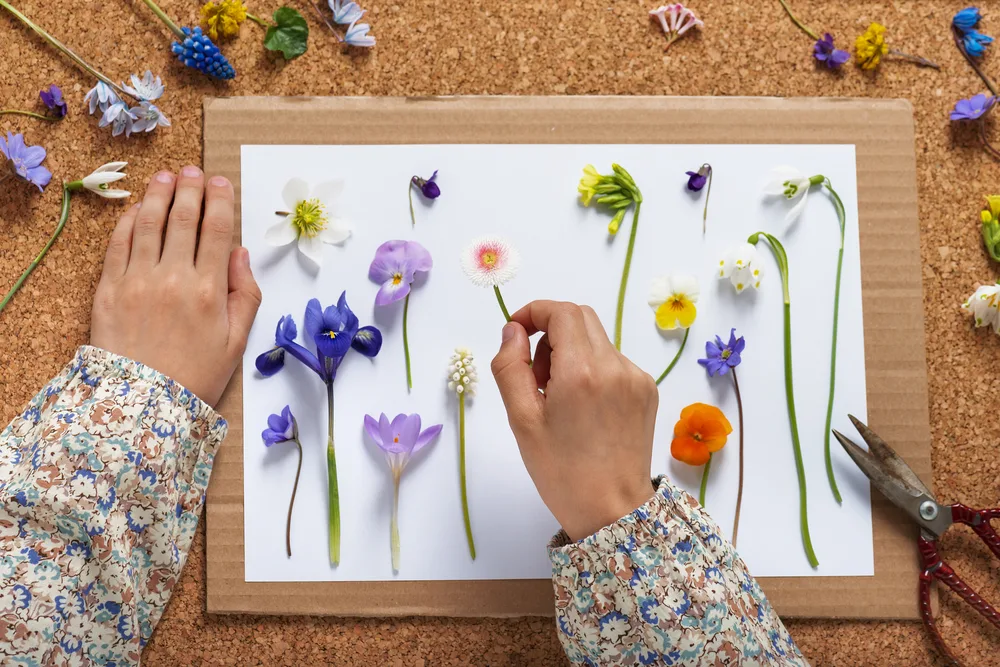
Collect and press wild flowers together.
How to Press Flowers @ proflowers.com.
56. Make Hammered Leaf and Flower Art
Make hammered leaf and flower prints on paper or fabric.
Hammered Leaf and Flower Prints @ instructables.com.
57. Create Mobiles or Wind Chimes
Make mobiles or wind chimes using natural or reclaimed materials.
58. Decorate Your Garden
Make windmills for your garden using old plastic bottles.
DIY Garden Windmill From Plastic Bottles @ thesockgarden.wordpress.com.
59. Get Creative With Words and Pictures
Start writing ‘nature diaries’ with stories and drawings of the things in your garden as the seasons change.
60. Make Music
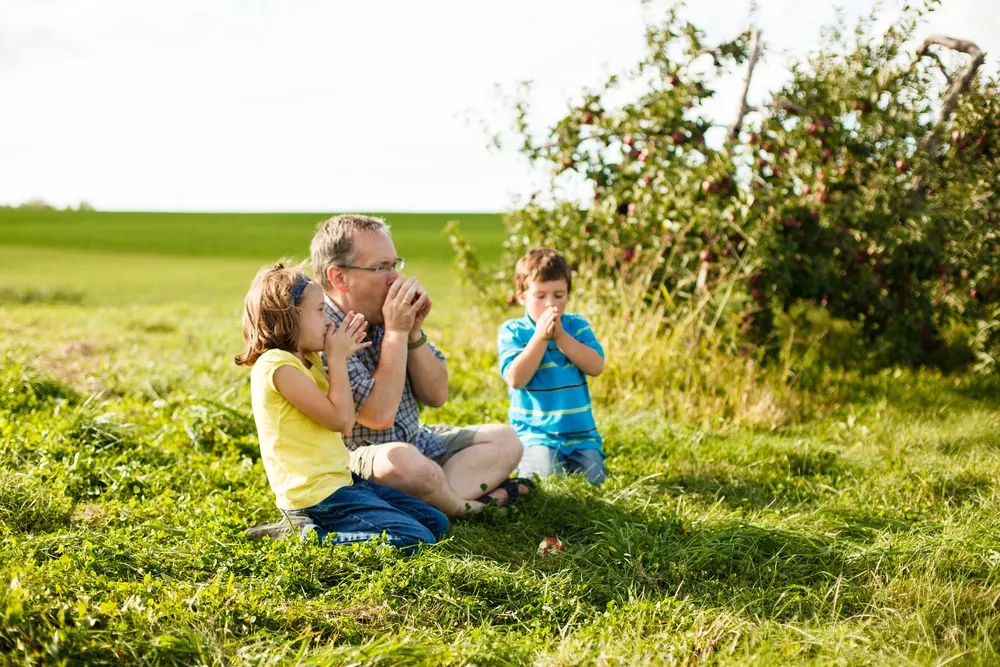
Get musical in your garden, making music with the things you can find in your garden and around your home.
For example, teach kids how to whistle with reeds or grass. And use sticks and stones to make percussive instruments.
Sing garden songs, or teach them how to play new instruments as you spend time in your garden. Get your kids to listen to the music your garden makes – from the birdsong to the wind in the trees…
Getting Exercise in the Garden
Plenty of garden jobs also offer opportunities to truly tire out your little tearaways. You can tire them out by creating fun physical projects, and by using activity ideas for physical play.
Here are a few suggestions you might like to consider:
61. Put the Kids to Work
Get kids to transport compost or organic matter around your garden, and collect and carry natural materials for the various build projects you take on.
As they run too and fro, young children are likely to get twice as much exercise as you do!
62. Even Weeding Can Be Fun
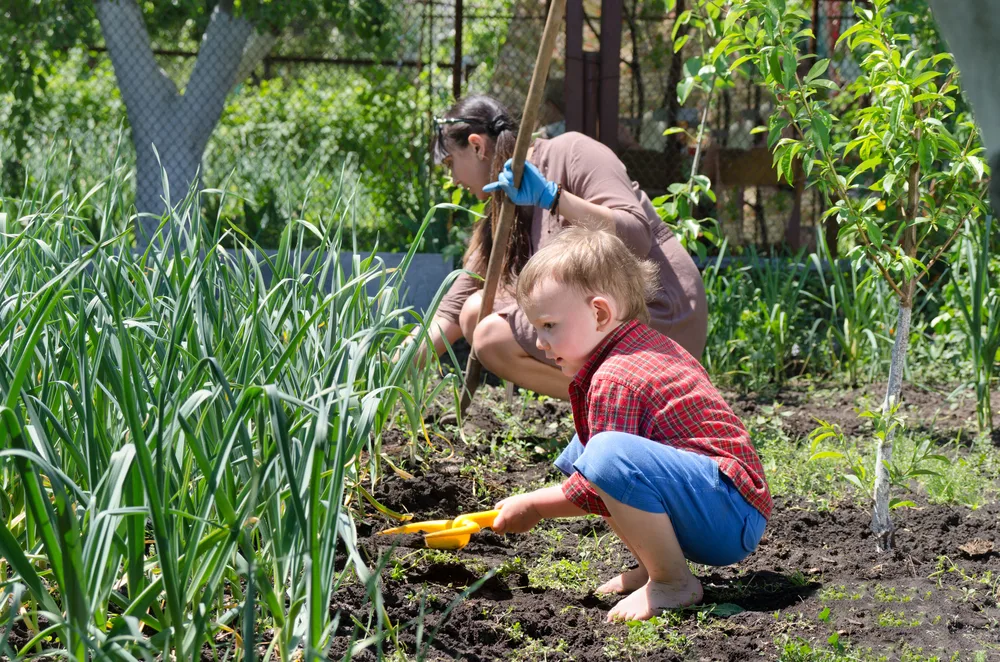
Set up friendly weeding competitions – see who can gather the most weeds and put them into a container to make some liquid plant feed.
63. Send Them Out to Seek Things You Need
Create a ‘scavenger hunt’ for kids, so they collect items you need from around the garden.
64. Get Kids To Help With Pest Control
Or send them on a slug or bug hunt, to pick these pests off your plants.
65. Set Challenges
Set a series of physical garden challenges. For example, get them to climb trees, jump over things, balance on bed edging, logs or low walls etc..
66. Have a Private Sports Day
Have a garden ‘sports day’ with races and events. Running races, ‘hurdles’, sack races, egg and spoon races, wheelbarrow races, throwing events and more can be arranged with items you have to hand.
67. Send Kids on a Treasure Hunt
Make a ‘treasure hunt’ with various clues hidden all around your garden, which help them to learn about your garden before they get a treat at the end. (Rewards can be powerful incentives.)
68. Let Chaos Reign
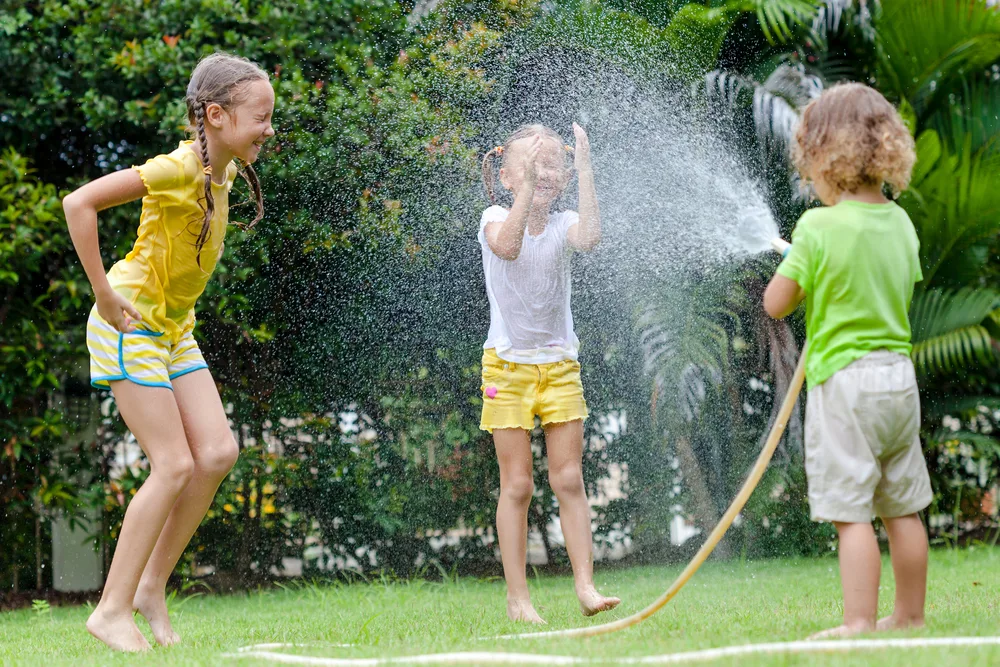
Let watering turn into a good natured water fight on a warm day.
69. Make a Track Through Your Garden
Make a new track for running, cycling etc. around your garden. (There are may reclaimed materials you might be able to use, or you could simply mow a track through log grass or a meadow.)
70. Play Simple Games
Play old fashioned games with a skipping rope, or just yourselves. Hide and seek can be a fun game in densely planted gardens, for example. If you have a lawn, play simple ball games etc. with your family.
These are just a few suggestions to help you and your kids get out into the fresh air. These are just some ways to improve and enjoy your garden over the coming weeks and months.
Remember, when you have a garden, you have a space which offers many possibilities. So make sure, whatever you choose to do there, that you make the most of yours.
Sow, grow, explore and enjoy and while not everything will always go according to plan, you are certain to see plenty of positive results.

Get the famous Rural Sprout newsletter delivered to your inbox.
Including Sunday musings from our editor, Tracey, as well as “What’s Up Wednesday” our roundup of what’s in season and new article updates and alerts.


